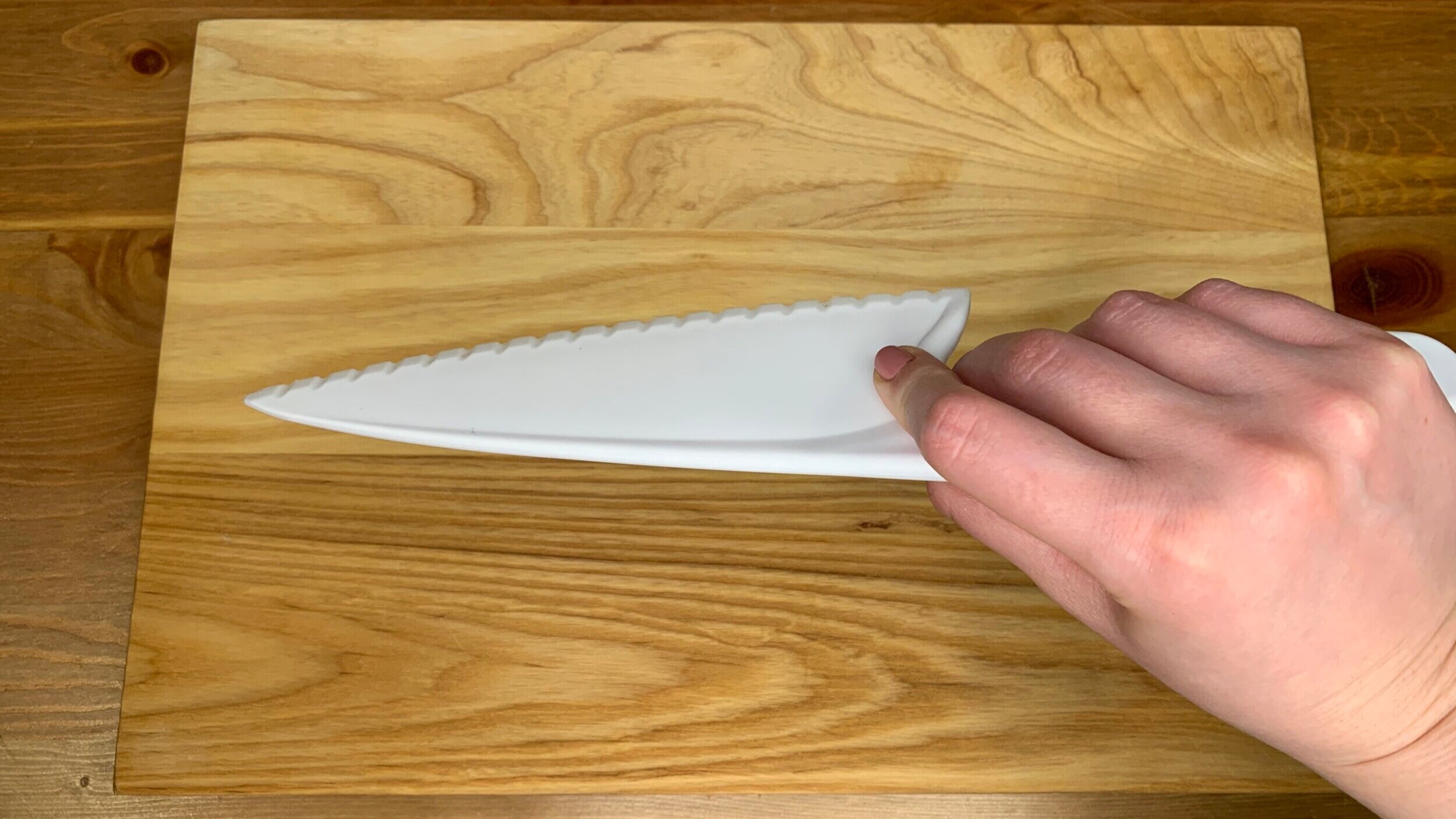Knife Safety + How to Hold a Knife
Safety in the kitchen is always important, regardless of age and ability, however, it can be an even larger cause of anxiety for parents of children and teens with special needs. The kitchen has sharp tools and hot items, includes a lot of multi-tasking, and requires high alert to be safe. To ease concerns and ensure maximum safety when chopping ingredients, we recommend:
Getting creative
If something can be “chopped” without actually using a knife, don’t use one! For example, cauliflower and broccoli florets can be broken apart with your hands. Herbs and lettuce can also be torn with hands or cut using scissors.
Using adaptive tools
Culikid has cut-proof knives that are great for any first-time chefs. Using a safe item like this can introduce the movements and techniques needed to chop in a low-risk situation. (If you’d like a cut-proof Culikid knife mailed to you, please donate $10 to help us cover our costs or contact us.)
Practicing safety
Practice safety even with adaptive tools. Even if your child or teen uses a cut-proof knife, make sure to teach knife safety. Remind your child or teen that knives are not toys (even plastic ones) and that they should be careful (event with cut-proof ones). This will help them be safe when they are ready to graduate to using a traditional knife—and show you when they are ready for that step. See our visual steps below for how to hold a knife.
How to Hold a Knife
1. With your dominant hand (left if you’re a lefty, right if you’re a righty), use your pointer finger and thumb to pinch the knife right where the blade meets the handle. Wrap the rest of your fingers around the handle.
2. With your other hand, bend your fingertips under like a bear claw.
3. Use your “bear claw” to safely hold food while you cut with the other hand.





